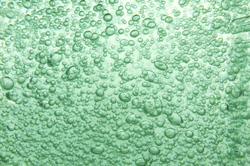Tiny bubbles with low-cost methods
Simplifying the production of foams and thus reducing production costs would significantly benefit the many small and medium-sized enterprises (SMEs) working in the field. It would boost their competitive position and enable them to regain markets from foreign companies and their less expensive products. Novel technology developed within the scope of the EU-funded project LIGHT-FOAM promises to facilitate low-cost production with existing injection moulding, extrusion and compression moulding equipment. It centres on infusing nitrogen gas into the polymers, trapping it and releasing it during processing to create foaming activity. Scientists used a commercial autoclave process to infuse high levels of nitrogen at a temperature above the glass transition temperature of five selected polymers. Here, gaseous diffusion is high. Cooling to room temperature traps the nitrogen molecules and reduces the free volume of the polymer granules. A predictive model of nitrogen dissolution and diffusion developed iteratively from feedback from lab-scale tests helped optimise conditions and ensure compatibility with current autoclave processes. A specialised packing and shipping procedure was needed to ensure nitrogen is not lost before polymer granules are delivered to end users. Specifications followed legislation for transport of goods under pressure. Researchers chose an inexpensive solution consisting of layers of polyolefin and aluminium containing a one-way valve to release pressure in case of build-up. Preliminary storage trials of gassed and non-gassed polycarbonate samples were quite promising. Finally, researchers optimised the moulding process for uniform nucleation and growth of nitrogen bubbles within the polymer. Numerous trials were undertaken and the effects of die design and processing parameters evaluated on product density, mechanical properties and microstructure. Three case study parts were manufactured for consortium beneficiaries, one for each manufacturing technique. Dissemination and demonstration has resulted in contact from several companies and identification of two commercial opportunities. LIGHT-FOAM delivered a novel technique to produce high-quality foams from polymers without the need for chemical blowing agents or special equipment. The significant reductions in cost together with continued optimisation according to end-user materials, processes and product lines promises major benefits to SMEs in the field.







